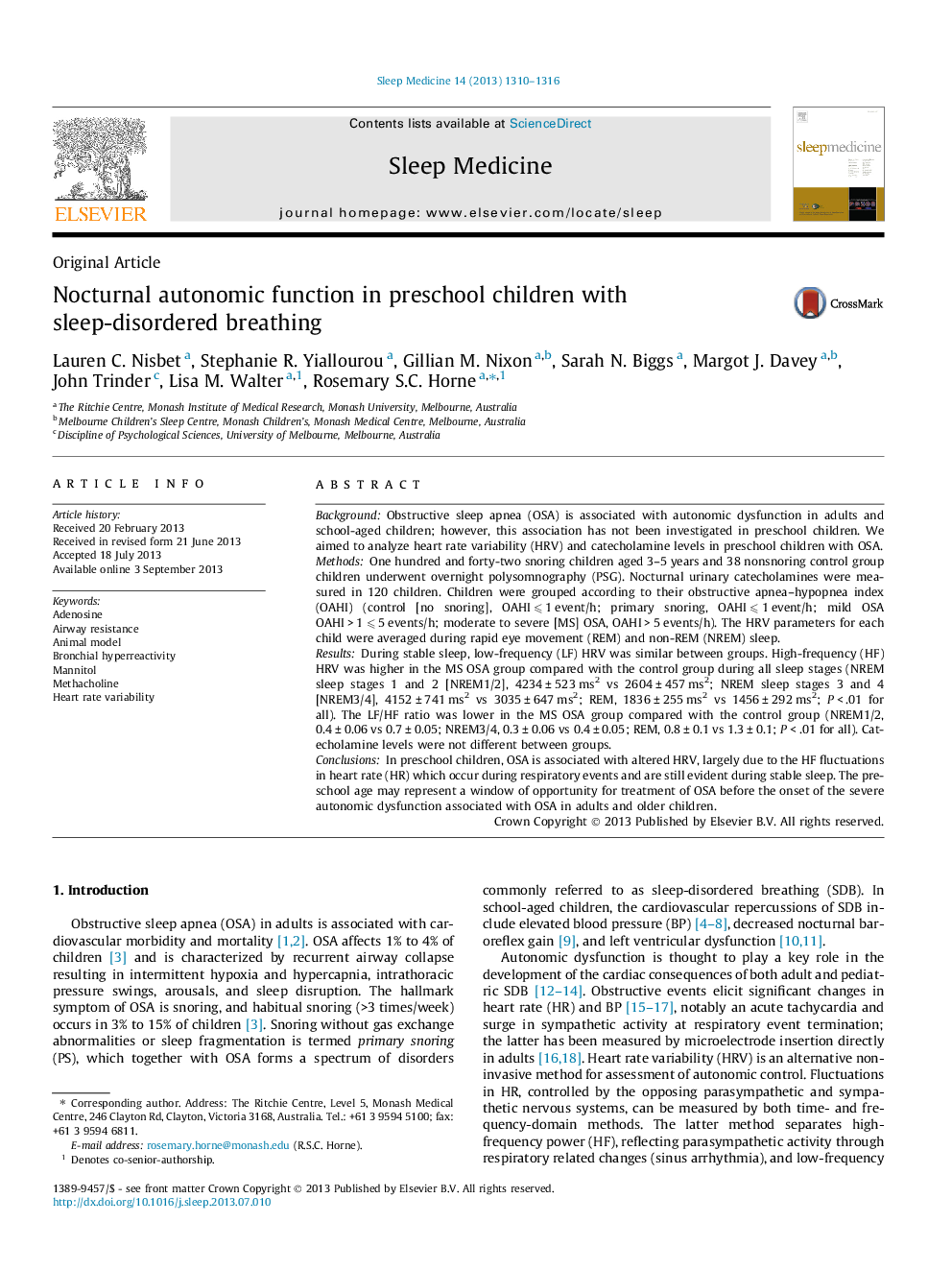| کد مقاله | کد نشریه | سال انتشار | مقاله انگلیسی | نسخه تمام متن |
|---|---|---|---|---|
| 6061026 | 1200253 | 2013 | 7 صفحه PDF | دانلود رایگان |
- Preschool children with obstructive sleep apnea (OSA) exhibit increased heart rate variability.
- Urinary catecholamine levels are not elevated in preschool OSA.
- Preschool children with OSA do not demonstrate autonomic dysfunction.
BackgroundObstructive sleep apnea (OSA) is associated with autonomic dysfunction in adults and school-aged children; however, this association has not been investigated in preschool children. We aimed to analyze heart rate variability (HRV) and catecholamine levels in preschool children with OSA.MethodsOne hundred and forty-two snoring children aged 3-5 years and 38 nonsnoring control group children underwent overnight polysomnography (PSG). Nocturnal urinary catecholamines were measured in 120 children. Children were grouped according to their obstructive apnea-hypopnea index (OAHI) (control [no snoring], OAHI ⩽ 1 event/h; primary snoring, OAHI ⩽ 1 event/h; mild OSA OAHI > 1 ⩽ 5 events/h; moderate to severe [MS] OSA, OAHI > 5 events/h). The HRV parameters for each child were averaged during rapid eye movement (REM) and non-REM (NREM) sleep.ResultsDuring stable sleep, low-frequency (LF) HRV was similar between groups. High-frequency (HF) HRV was higher in the MS OSA group compared with the control group during all sleep stages (NREM sleep stages 1 and 2 [NREM1/2], 4234 ± 523 ms2 vs 2604 ± 457 ms2; NREM sleep stages 3 and 4 [NREM3/4], 4152 ± 741 ms2 vs 3035 ± 647 ms2; REM, 1836 ± 255 ms2 vs 1456 ± 292 ms2; P < .01 for all). The LF/HF ratio was lower in the MS OSA group compared with the control group (NREM1/2, 0.4 ± 0.06 vs 0.7 ± 0.05; NREM3/4, 0.3 ± 0.06 vs 0.4 ± 0.05; REM, 0.8 ± 0.1 vs 1.3 ± 0.1; P < .01 for all). Catecholamine levels were not different between groups.ConclusionsIn preschool children, OSA is associated with altered HRV, largely due to the HF fluctuations in heart rate (HR) which occur during respiratory events and are still evident during stable sleep. The preschool age may represent a window of opportunity for treatment of OSA before the onset of the severe autonomic dysfunction associated with OSA in adults and older children.
Journal: Sleep Medicine - Volume 14, Issue 12, December 2013, Pages 1310-1316
